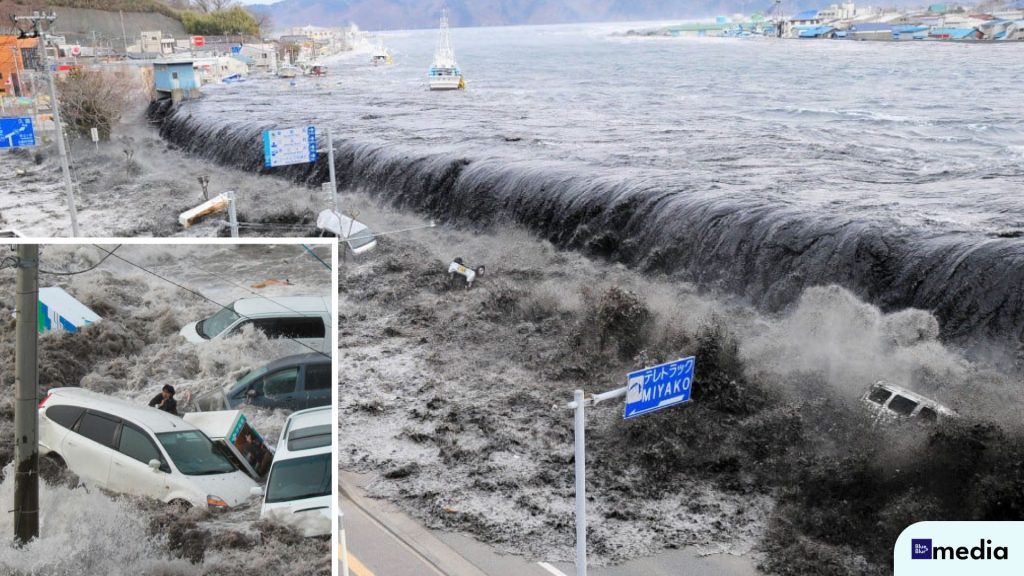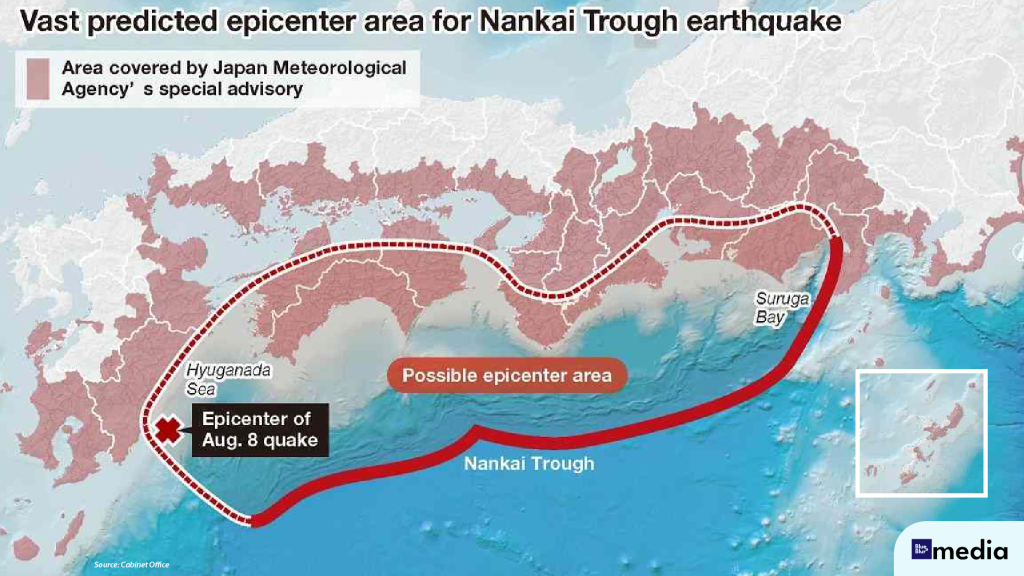Japan Braces for Potential Nankai Trough Megaquake: Government Report Warns of 300,000 Casualties

Japanese Officials Assess 80% Chance of Massive Seismic Event Along Pacific Coast in Coming Decades
A Japanese government risk assessment report released on March 31, 2025, warns of catastrophic consequences from a potential megaquake that could strike along the country’s Pacific coastline. The comprehensive analysis evaluates the likelihood and impact of a major seismic event along the Nankai Trough.
The Nankai Trough is a 900 km seismic zone off Japan’s southwest Pacific coast, where the Philippine Sea Plate is subducting under the Eurasian Plate. This geological formation has historically produced some of Japan’s most destructive earthquakes.

Scientists estimate an 80% chance of a magnitude 8 to 9 earthquake occurring along the Nankai Trough sometime in the future, not imminently. This assessment is based on historical patterns and current seismic monitoring.
The expected economic impact has been revised upward to 270.3 trillion yen ($1.81 trillion), a significant increase from previous estimates of 214.2 trillion yen. This adjustment accounts for recent inflationary pressures and updated terrain data that expanded anticipated flood areas.
Preliminary casualty estimates suggest approximately 298,000 people could lose their lives if the earthquake strikes late at night during winter months. This sobering figure primarily includes victims of both the initial quake and subsequent tsunamis.
Japan could face a humanitarian crisis with an estimated 1.23 million evacuees, representing about 1% of the country’s total population. Emergency response systems would be severely strained by displacement on this scale.
Historical patterns indicate the Nankai Trough experiences major earthquakes roughly every 100 to 150 years. This cyclical nature allows for planning but also creates urgency for preparation measures.
The assessment notes that thousands of buildings could collapse across affected regions. Coastal areas face dual threats from both ground shaking and powerful tsunami waves that would follow.
Japan has experienced several devastating earthquakes in recent history, including the 2011 Tōhoku earthquake and tsunami. That disaster claimed over 15,000 lives and caused widespread destruction across northeastern Japan.
Japanese authorities continue to strengthen building codes and expand early warning systems in preparation for future seismic events. The government uses these risk assessments to prioritize infrastructure improvements and emergency planning.
International cooperation mechanisms are being established to coordinate potential relief efforts should this catastrophic earthquake occur. Japan’s advanced preparation measures aim to reduce casualties and economic impact when—not if—the next major earthquake strikes.






